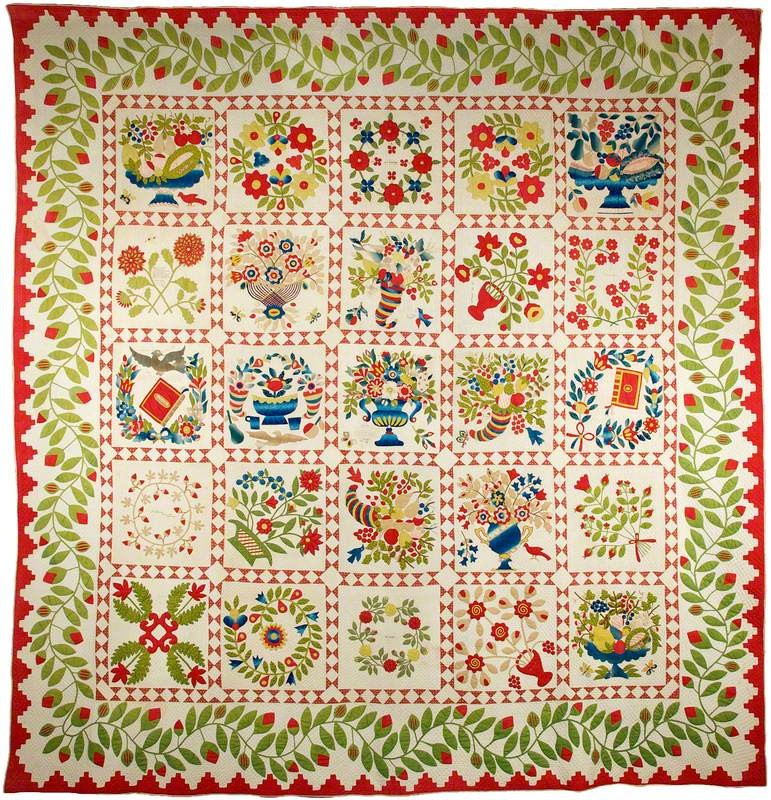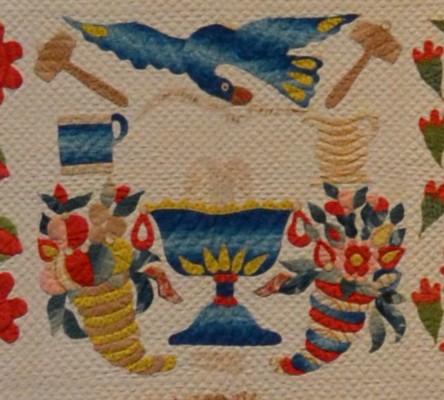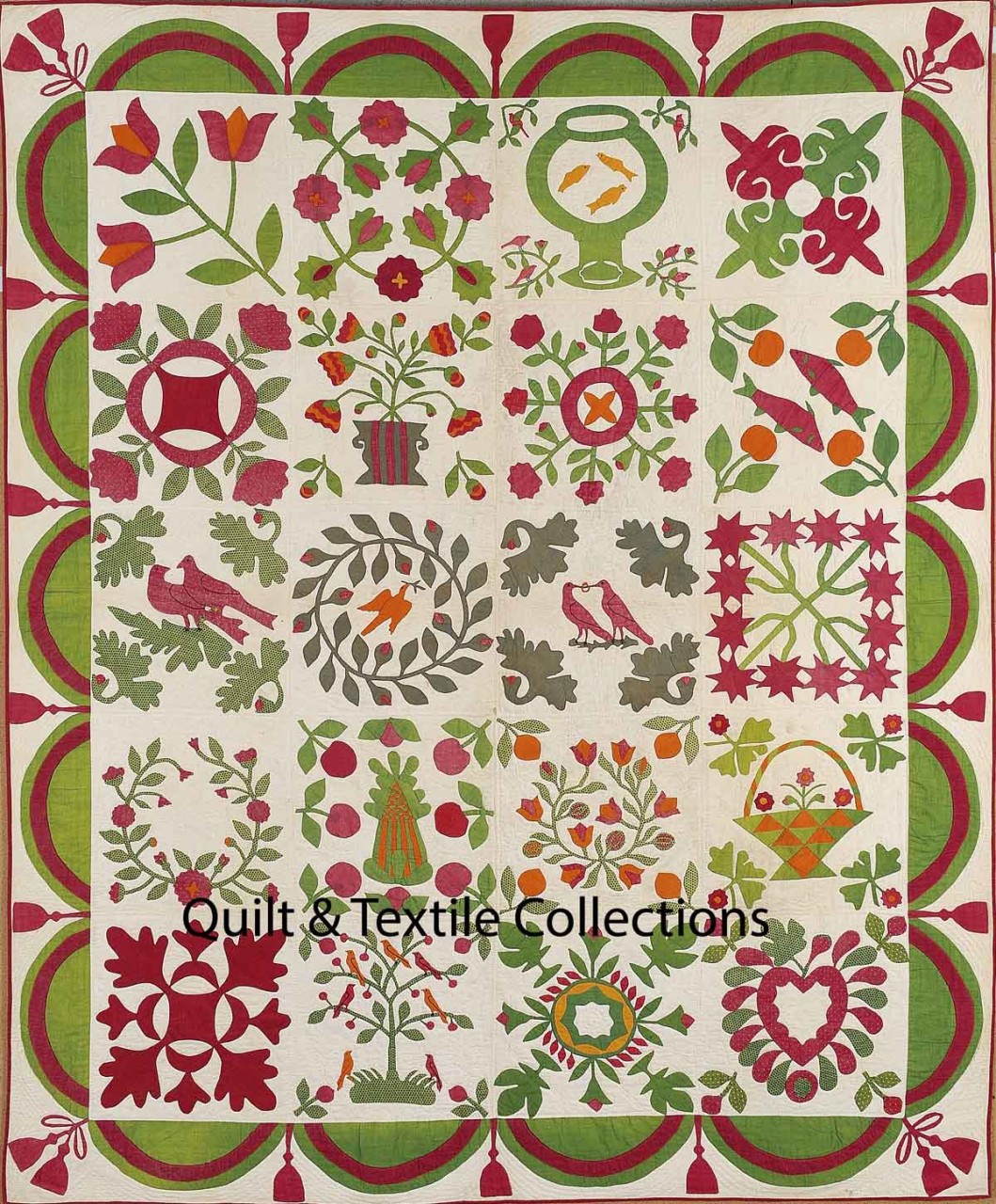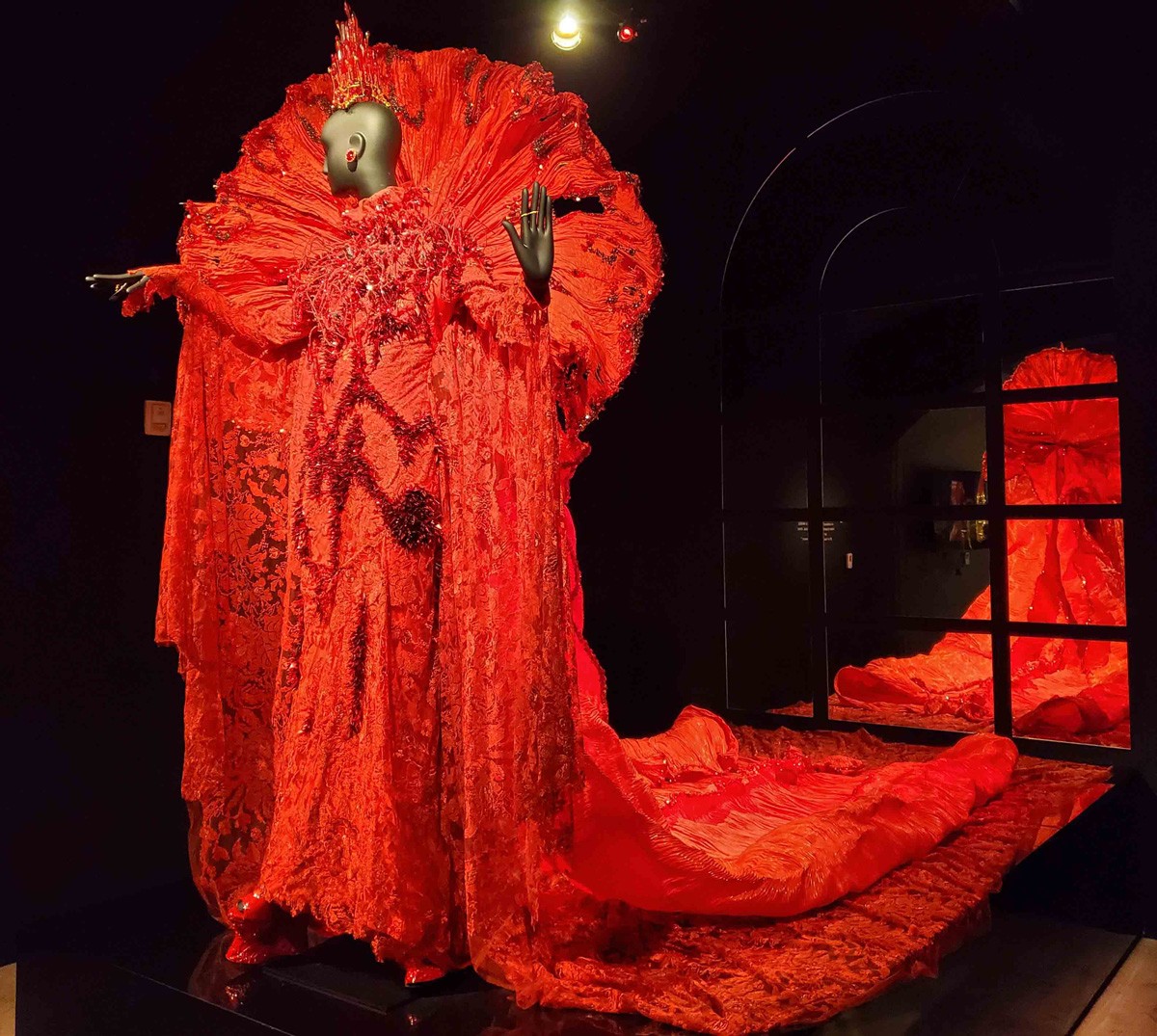
Last blog, I mentioned there were variations on the Mary Ann O’laughlen style Fountain Block. However, that is not to say that these variations were temperance blocks, perhaps simply offering a variety of options with a wider appeal. (Kay and I had decided to research each block of the BAQ’s in the collection to see what information could be gleaned.) One variation is the flower in place of the fountain as found in the Alice A Ryder quilt c. 1847. Apparently, it was a good year for the fountain block with that date associated with the lone Temperance Block, Oram BAQ, Herget BAQ all having an 1847 date associated with it. (Here is the link to see these quilts.) Two of the BAQ’s with these blocks don’t have a specific date, and the Pettecord quilt has...





